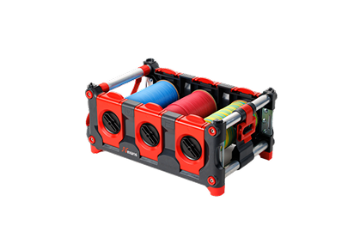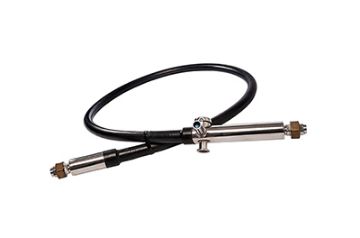- Markets
- Products
- Services
- News
- Tools & Resources
- About Nexans
- Search
- Contact us
- Compare
- Sign in
Fire safety
Fire safety starts with cables

When a fire breaks out in a building, most casualties are not caused by the flames themselves, but by the smoke and toxic gases released. These considerably reduce visibility, complicate evacuation and cause damage beyond the area directly affected by the fire.
In this context, electrical cables are not just technical components. They become a central element of the fire safety strategy: they either amplify the risk, or help to slow it down.
Why are cables crucial in the event of fire?
Electrical cables distribute energy and transmit information throughout a building. Invisible once installed, they are omnipresent: in walls, floors, ceilings and service ducts. Their quantity, constantly increasing with technological developments, represents a significant combustible load.
In the event of fire, these cables can :
- Start a fire,
- Release opaque smoke and acidic gases that impede evacuation, while attacking building materials and structures,
- Cease to function and power critical safety systems.
Using appropriate fire safety cables can limit these effects, protecting lives, property and infrastructure.
Webinar overview :
- Analysis of the new French regulations
- Presentation of high-performance fire-resistant electrical cable solutions
- Technical expertise from professionals in sealing electrical systems
Webinar overview :
- Analysis of the new French regulations
- Presentation of high-performance fire-resistant electrical cable solutions
- Technical expertise from professionals in sealing electrical systems
Two essential functions: protection and fire resistance
Depending on their design, fire safety cables fulfill two essential requirements.
Fire protection cables are designed to annihilate the spread of flames and limit the production of smoke and noxious gases. They help maintain visibility and reduce exposure to toxic substances, making it easier to evacuate people.
Fire-resistant cables, meanwhile, ensure continuity of operation of essential safety circuits over a period of time defined by national regulations. This period takes into account both the rise in temperature in the environment and the time required to ensure the evacuation of occupants and the intervention of emergency services.
They guarantee the power supply to safety equipment: alarms, smoke extraction systems, emergency lighting, remote control devices, etc.
Note that fire-resistant cables systematically fulfill the role of fire protection.
Greater challenges in PAB and HRB buildings
Public Access Buildings (PAB) and High-Rise Buildings (HRB) are subject to specific requirements. In France, the decree of May 17, 2024 defines the fire behavior characteristics expected of cables installed in these sensitive buildings. This decree stipulates that all new cables installed in these structures must have a minimum Euroclass of Cca-s2,d2,a2.
However, there is an exception for underground stations and underground parts of mixed stations. Here, cables must be B2ca-s1a,d1,a1.
These requirements are in line with the Construction Products Regulation (CPR), applicable throughout Europe. Since July 1, 2017, fire protection cables must be CE-marked and accompanied by a declaration of performance in accordance with EN 50575.
Specifiers, installers, distributors and building managers have a key role to play in selecting compliant, high-performance cables.
Learn more about this:
Nexans cables: the right answer to your needs
Faced with these challenges, Nexans has developed several types of cable, designed to meet the most stringent fire safety requirements in PAB, IGH, collective housing and Workplace Establishments.
We don't just supply cables. We offer a comprehensive range of products:
- Products complying with the most stringent standards and regulations,
- Environmental data available,
- Technical support, BIM, CCTP, documentation

The CPR for Reaction to Fire cables became effective in 2016 according to the product standard EN50575:2014 that was listed on the ECOJ C 378 (Notice No. 2015/C 378/03) on the 13th of November.
Starting from the 1st of July 2017, every product must be CE marked and needs to have Declaration of Performance
In each Member State a CPR Contact Point has been established to provide information.
Our websites
Select your country to find our products and solutions
-
Africa
- Africa
- Ghana
- Ivory Coast
- Morocco
- North West Africa
- Americas
- Asia
- Europe
- Oceania







